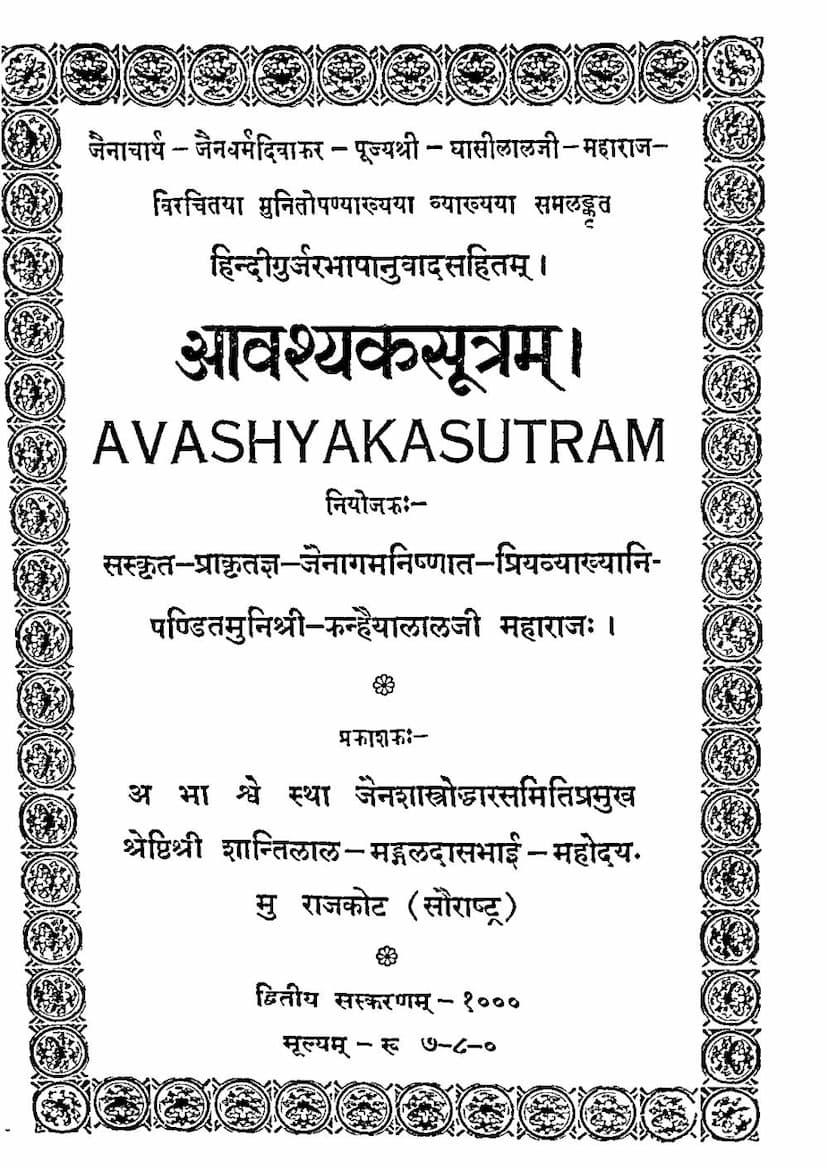Aavashyak Sutram
Added to library: September 1, 2025

Summary
The text provided is the title page and introductory/endorsement pages of the Jain text "Avashyak Sutram," authored by Ghasi Lal Maharaj. The book is published by A.B. Shwetambar Sthanakwasi Jain Shastroddhar Samiti and a catalog link is provided.
The preface highlights the importance of the Avashyak Sutram, comparing the necessity of its practices (like Samayik) for spiritual purification to the necessity of medicine for physical health. It states that the Sutram explains these essential practices and hence the text itself is called 'Avashyak'.
It mentions that Pujya Shri Ghasi Lal Ji Maharaj wrote a commentary on this text in Sanskrit, titled 'Munitopni,' which is described as simple and understandable even for those with moderate Sanskrit knowledge. The preface also notes that a Hindi and Gujarati translation of this commentary is included for the benefit of the general public.
The text is a second edition, with 1000 copies printed, and its price is Rs. 7-8-0. The publication date is indicated as Veer Samvat 2484 and Vikram Samvat 2014, corresponding to the Gregorian year 1958.
The subsequent pages include numerous testimonials and endorsements from various respected Jain scholars, monks, mahasatis, college professors, and learned laypersons, including esteemed figures like Upadhyay Shri 1008 Shri Atmaramji Maharaj and Pandit Muni Shri 1007 Shri Hemchandji Maharaj. These endorsements praise the work of Ghasi Lal Maharaj in compiling, commenting on, and translating the Jain Agamas, emphasizing the clarity, usefulness, and importance of his commentaries for the Jain community. The endorsements span various scriptures like Dashavaikalik Sutra, Gyata-Dharmakathang Sutra, Acharaang Sutra, and Anu-ttaropapaatik Sutra, indicating Ghasi Lal Maharaj's significant contribution to Jain Agamological scholarship.
A strong emphasis is placed on the need for making these ancient Jain scriptures accessible to the common people through clear commentaries and translations in local languages. The testimonials highlight the author's dedication, scholarship, and the profound benefit these works offer for spiritual upliftment and the preservation of Jain knowledge.
The structure of the Avashyak Sutram itself is also outlined in the index, listing the six essential parts: Samayik, Chaturvinshati Stava, Vandana, Pratikraman, Kayotsarg, and Pratyakhyan. The text also provides detailed commentaries on each of these sections, explaining their significance, the underlying principles, and the traditional interpretation.
In essence, this document represents a comprehensive and highly endorsed publication of the Avashyak Sutram with a detailed commentary by Ghasi Lal Maharaj, aiming to make these vital Jain practices understandable and accessible to a wider audience. The numerous commendations underscore the value and scholarly merit of this work within the Jain tradition.